2025 AI Industry Report: How AI Trends Are Transforming Business and Marketing
For years, I've skimmed through industry reports—some insightful, some so dense they felt like decoding a research paper. But this year? I paid attention.
Why? Because for the first time, I wasn't just curious about AI—I was anchored in it. Between AI video creation and advanced prompting tools, I've seen firsthand how quickly the landscape is shifting.
To say AI is everywhere isn't overstating it—it's reality. But I remember back in late 2022, hearing about this "chatbot" called ChatGPT and shrugging it off. I didn't get the hype... until one of my regular clients stopped calling. Their emails got sharper, their social content was suddenly more consistent, and it wasn't them—it was AI.
That was the moment I got it and I knew I had to get on it, somehow.
Now, the 2025 AI Industry Report by Social Media Examiner paints a crystal-clear picture of just how much AI has transformed marketing in a single year. I read every page, chart, and stat—and this post breaks down what really matters for marketers, creators, and small business owners navigating this new frontier.
1. The Rapid Rise of Daily AI Use in Marketing
Let's start with what might be the most telling sign of our times.
In 2024, only 37% of marketers said they used AI every day. This year? That number jumped to 60%.
That's not a slow burn—that's a leap. It means more than half of marketers are touching AI every single day—for brainstorming, drafting, editing, and automating.
When 80% of your industry is relying on AI tools daily or weekly, it's no longer optional—it's operational.
And it's not just about speed. The report found that marketers using AI daily saw up to 30% higher productivity. That's not just more output—it's better mental bandwidth.
Imagine reclaiming the hours you'd normally spend formatting posts, editing videos, or revising ad copy—and channeling them into strategy or creativity instead.
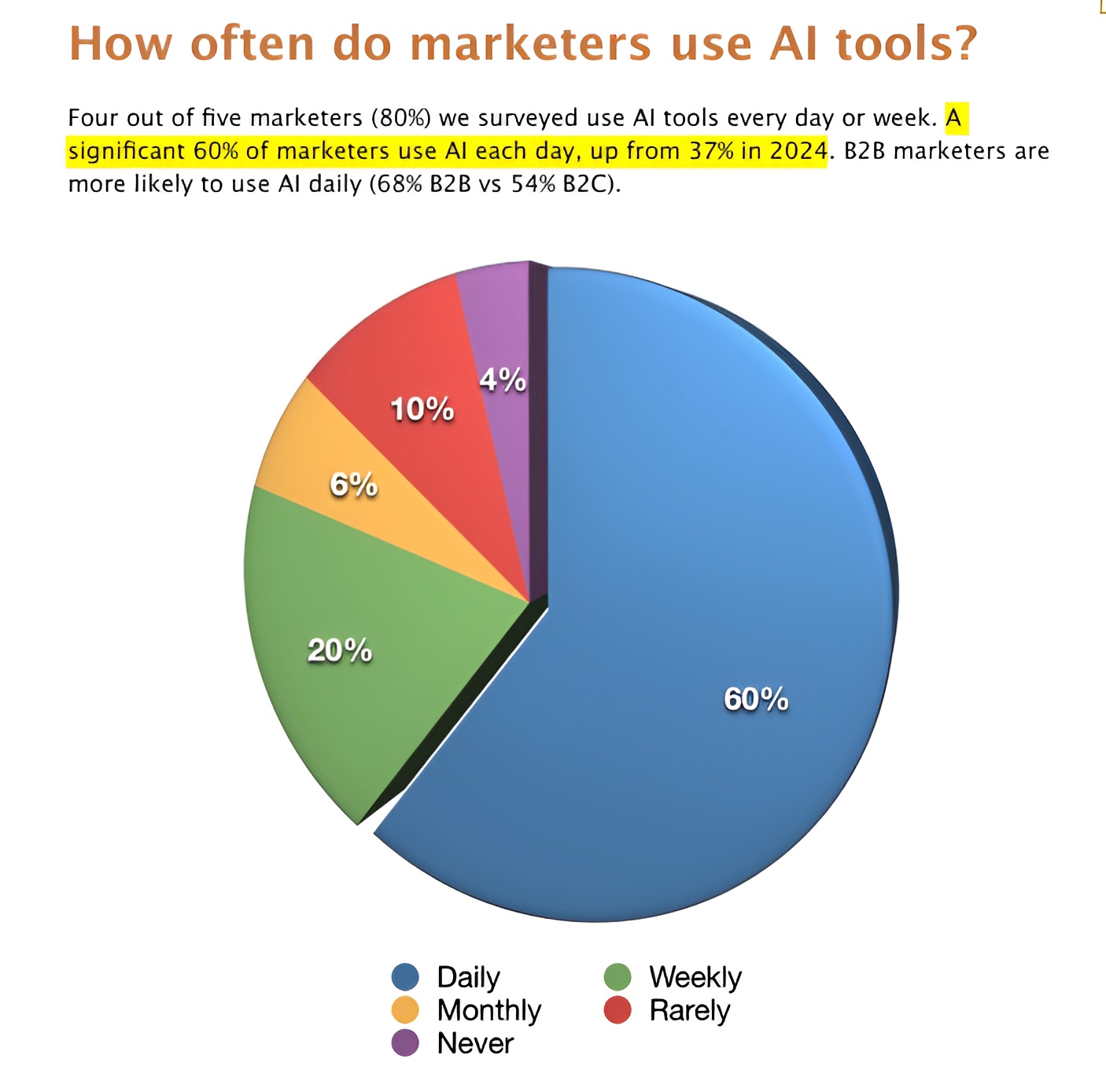
Daily AI Usage Growth 2024–2025
B2B marketers, by the way, are ahead of the curve—68% use AI daily compared to 54% of B2C. Why? Likely because AI fits neatly into systems-heavy workflows like lead generation, analytics, and content scaling. But don't count B2C out—consumer-facing brands are catching up fast, especially as visual AI tools mature.
2. Content Automation: The New Marketing Backbone
Here's the quiet revolution happening behind the scenes: content automation is no longer a "nice to have." It's the backbone of modern marketing.
The report shows that 84% of marketers want to learn AI automation workflows, up sharply from 2024.
Think about that—an entire workday freed up every week.
Automation is where the compounding benefits show up. Once you set up a workflow—say, automating your weekly LinkedIn posts or repurposing long-form content into short clips—AI keeps it running quietly in the background while you focus on growth.
Marketers who embrace automation early are reporting smoother workflows and faster feedback loops. And because these systems get better with use, the early adopters are already compounding their advantage.
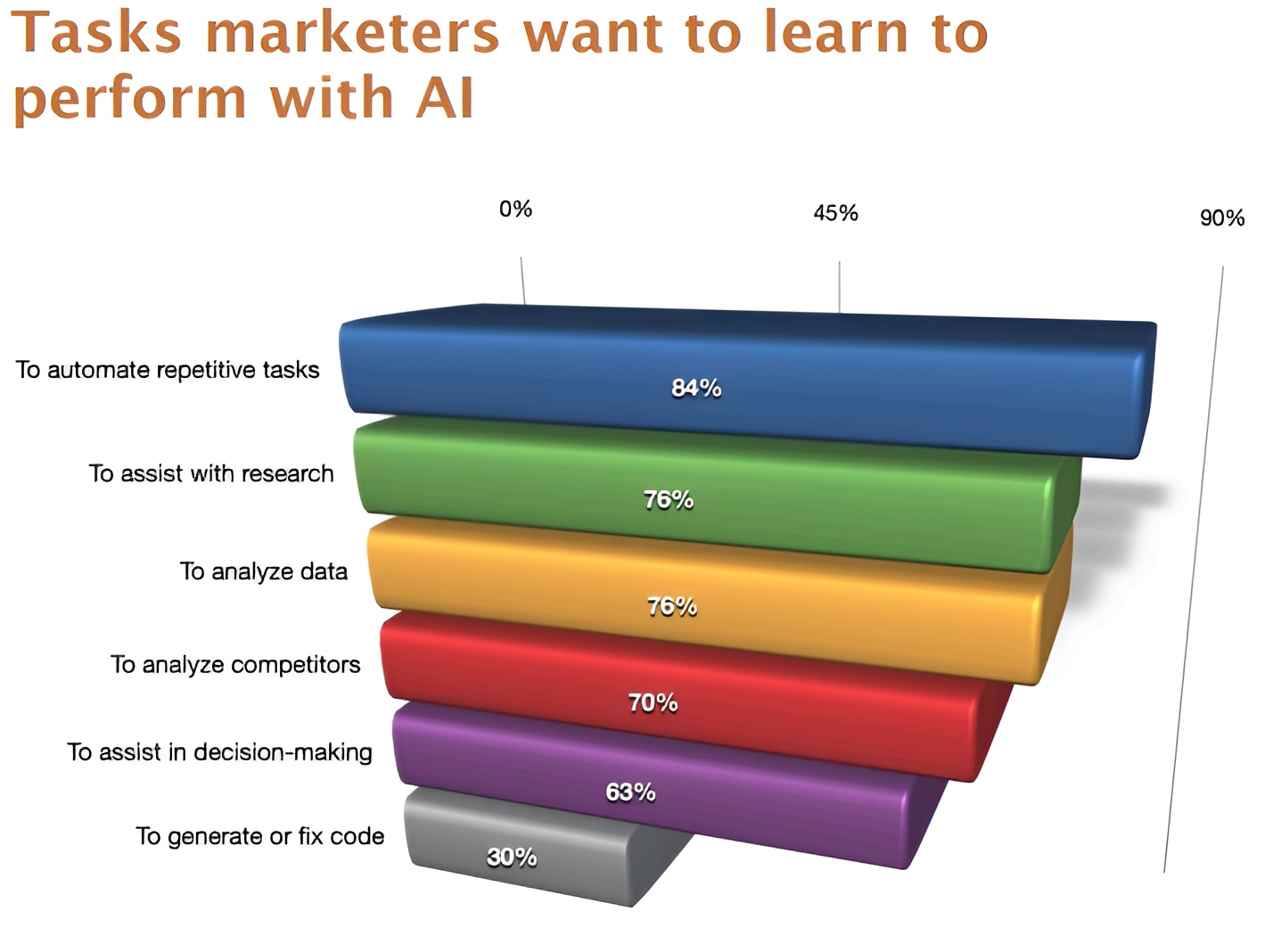
Marketer Interest in Content Automation
That's how one B2B marketer described it—and I couldn't agree more.
3. AI Video Creation: The Next Frontier
Now this one's close to my heart.
AI video creation is where creativity meets leverage. The report shows that only 22% of marketers currently use AI for video—but 69% want to learn. That's the biggest interest gap of any content type.
Why? Because video remains the king of engagement. There are many articles and studies that show how people recall more of what they watch than what they read.
But there's one problem: making professional videos, even for 60-second ads, is expensive and time-consuming.
Until now.
AI is leveling that playing field. Tools that generate B-roll, script scenes, match voiceovers, or animate stills are cutting production time from days to hours.
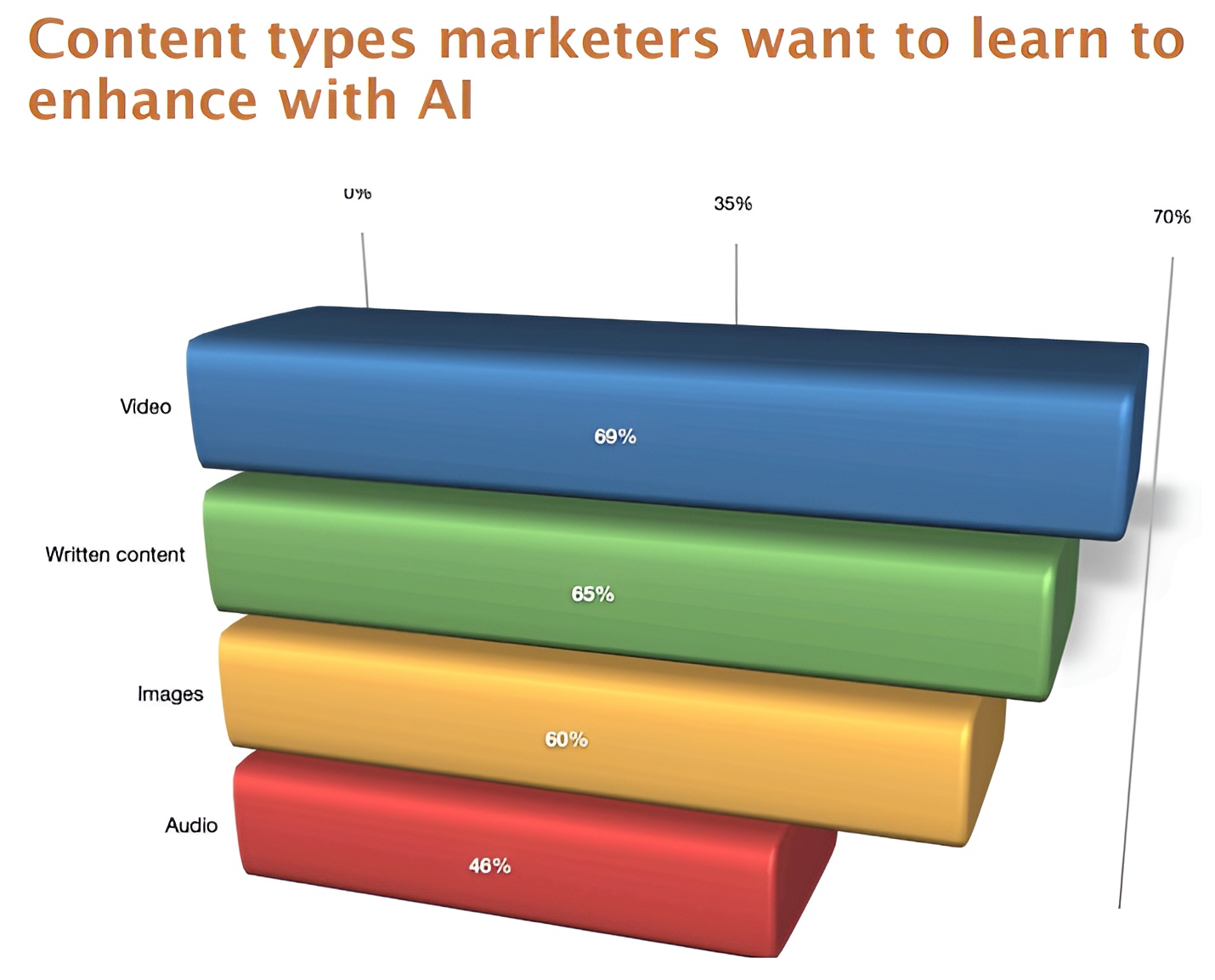
AI Video Adoption vs. Interest
And this isn't hypothetical. Brands are using AI to generate product explainers, customer testimonials, and even ad variations for testing. One small agency shared that they cut editing time by 70% using AI-assisted video workflows.
If you've been waiting to "get into video," 2025 is your year. The tech has matured, and the barrier to entry as well as the learning curve are lower than ever.
A practical starting point? Use AI tools to:
- Draft video scripts from existing blog posts. I like to use Katalist for storyboarding
- Generate AI avatars or voiceovers to test messaging. ElevenLabs is one of my favorite platforms for voice and it's pretty inexpensive.
- Edit captions, background noise, or transitions automatically. CapCut is an easy-to-use fun application that I use for all my video edits
Video isn't going away and it's only getting better.
4. Mastering ChatGPT Prompting for Better AI Output
Now, this one's massive.
According to the report, 81% of marketers want to master prompting, and 90% use ChatGPT as their primary AI tool.
That means prompting isn't just a trick—it's a core professional skill.
Think of prompting like briefing your team: the clearer you are, the better the results. A vague prompt gives you generic output. A structured, goal-oriented prompt gives you gold.
When marketers were surveyed about what they wanted to learn most, "prompting" beat out automation, workflows, and even strategy. Why? Because a single prompt can now generate outlines, blog posts, ads, and email campaigns—all consistent with your brand voice.
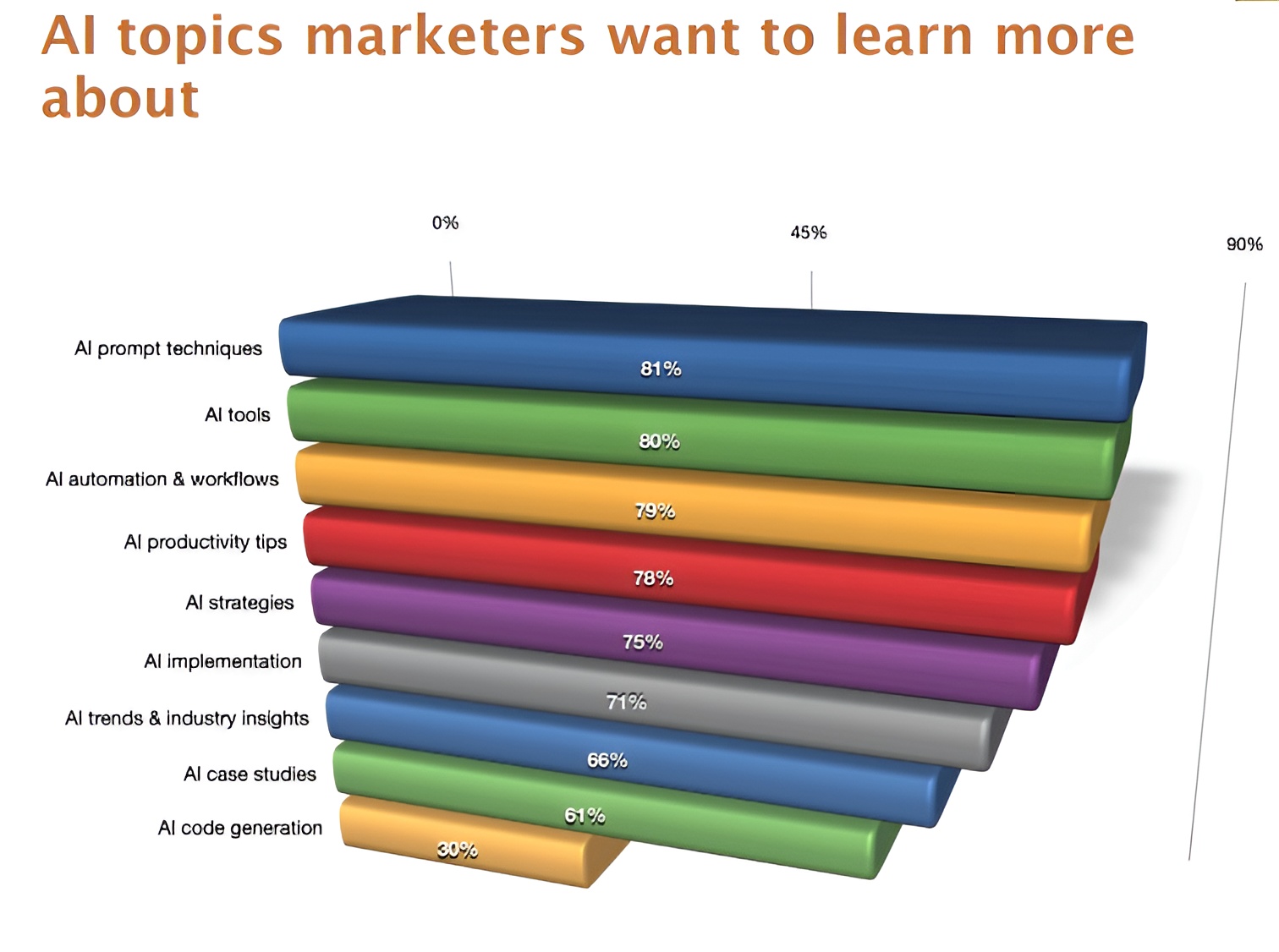
Top AI Topics Marketers Want to Learn
For anyone looking to improve:
- Always include your intent and audience in your prompt.
- Use context—add examples, tone, and purpose.
- Refine with follow-up prompts, not total rewrites.
That's not hyperbole—it's reality. And if you're a business owner, mastering prompts doesn't just make your AI tools smarter—it makes your entire operation more efficient.
Ready to improve your prompting skills? Check out my ChatGPT Prompt Guides for professional templates and strategies.
5. Image Creation and Branding with AI
Half of marketers (50%) now use AI for image creation and editing, up from 39% last year. That's a steep climb.
What's fueling it? Time, flexibility, and creative control.
AI tools like Leonardo AI, Midjourney, and Canva's AI features are helping marketers generate campaign visuals, thumbnails, and branded assets in minutes.
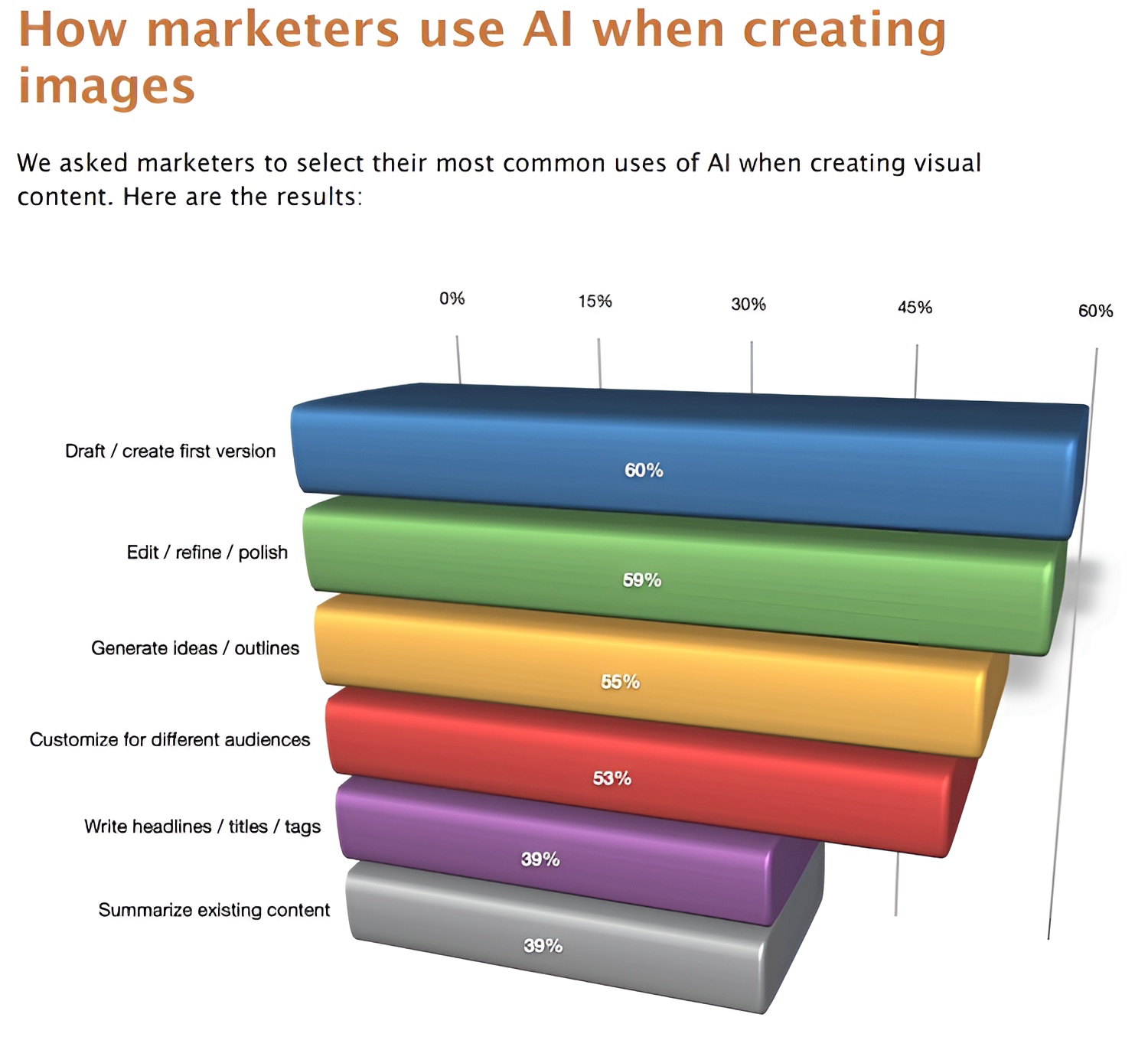
AI Image Creation Adoption
But the real story is how this shift affects branding. AI image generation means you can now maintain visual consistency across multiple platforms—without needing a full design team.
For example, an e-commerce brand might use AI to:
- Generate product mockups for A/B testing.
- Design seasonal ads in multiple colorways instantly.
- Recreate lifestyle shots using consistent lighting and tone.
AI imagery is no longer "fake." It's functional.
When done right—with brand guidelines, consistent prompts, and ethical use—it strengthens your identity rather than diluting it.
6. Managing AI Risks: Accuracy, Privacy, and Ethics
Now, let's talk about the digital elephant in the virtual room.
As excited as everyone is about AI, 77% of marketers still worry about accuracy, and 68% about data privacy. Those numbers haven't moved much from 2024—because these are valid concerns.
The line between efficiency and accountability is thin. No matter how you slice it, you can't automate responsibility.
AI hallucinations—those small but significant inaccuracies—can hurt credibility fast. Add copyright confusion and security breaches to the mix, and it's clear why many businesses are approaching anything to do with AI cautiously.
Best practices:
- Always fact-check AI-generated content.
- Avoid feeding private client data into public AI tools.
- Use citation and verification tools before publishing.
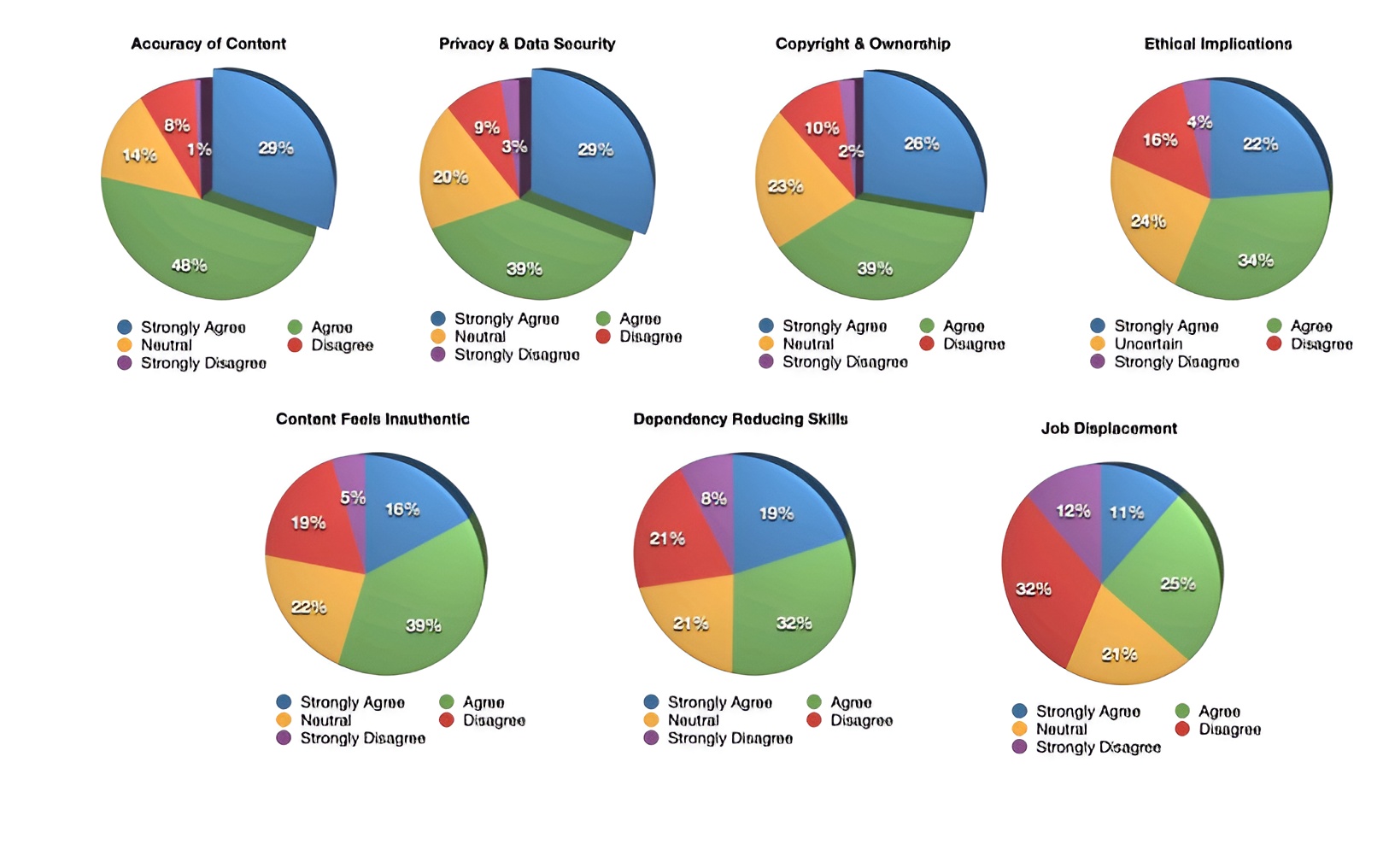
Marketer Concerns About AI (2025)
The good news? Only 36% worry about job loss. That means the conversation has shifted from replacement to reinforcement. AI isn't taking your job—it's changing how you do it.
7. Industry Outlook: AI's Transformative Power
The optimism is palpable.
90% of marketers believe AI will fundamentally change their industry, and 70% see that as an opportunity, not a threat.
That's the tone of this year's report: practical optimism.
Companies aren't fighting AI—they're adopting it in their own way. The report notes that 62% of organizations now actively encourage AI use, up from just over half last year.
What's fueling that encouragement?
- Proven productivity gains.
- Increased creative output.
- Measurable ROI from AI-led campaigns.
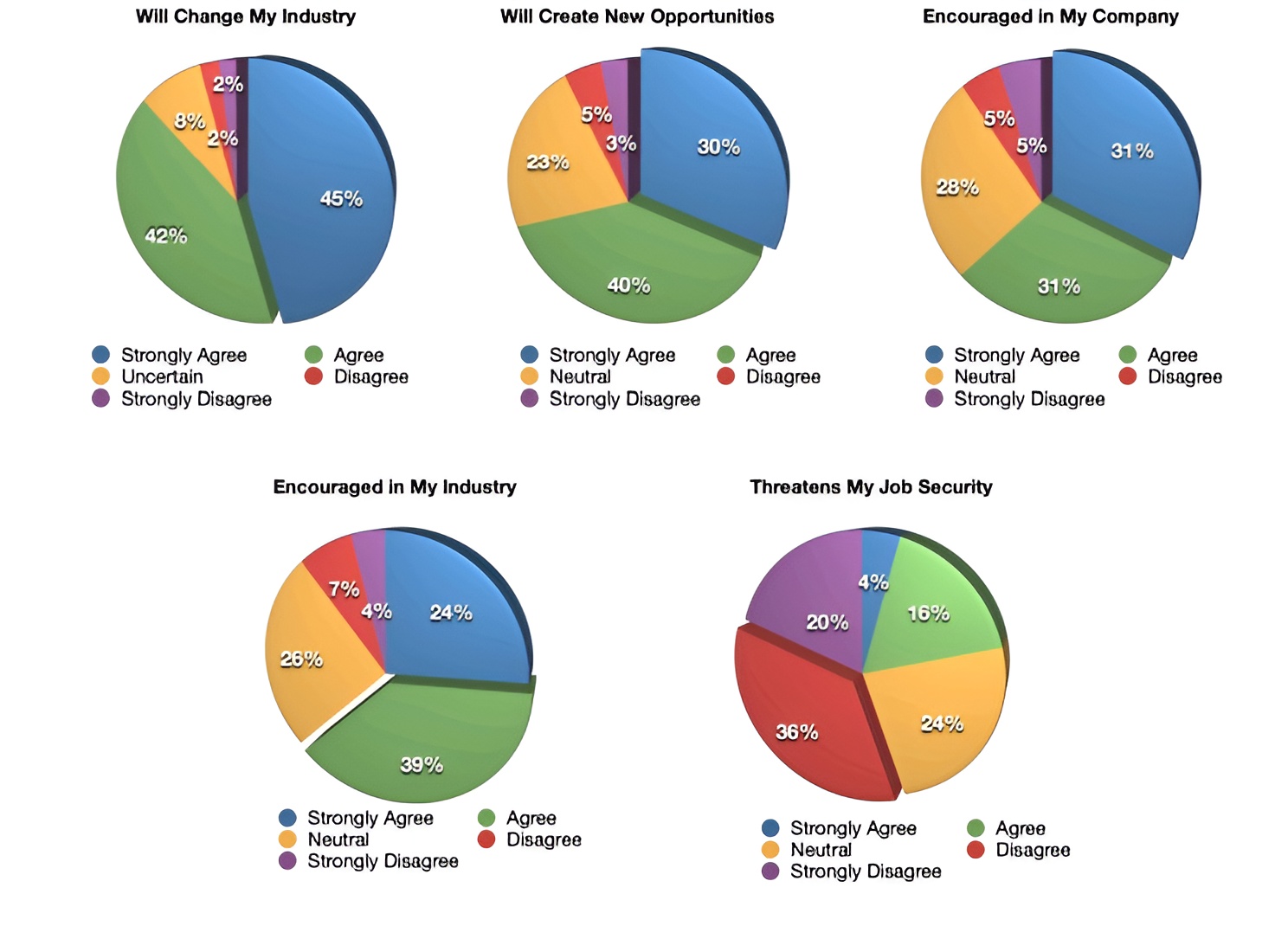
Marketer Views About AI in Their Industry
And it's not just the tech giants or agencies anymore. Small businesses are integrating AI into customer service, onboarding, and even local SEO—showing that democratized AI is leveling the business playing field faster than any prior tech wave.
Conclusion: What This Means for Your Business
After diving deep into the 2025 AI Industry Report, the message is clear: AI isn't coming—it's here.
Marketers who adapt now will shape the next wave of growth. Those who hesitate will spend 2026 catching up.
Here's what to do next:
- Use AI daily. Start small—drafts, edits, captions.
- Automate repetitive tasks. Your time is better spent on strategy.
- Experiment with AI video. It's the most in-demand skill of the year.
- Learn prompting. Every great AI result starts with a great prompt.
- Stay ethical and transparent. Your reputation matters more than speed.
The takeaway: AI is no longer about tools. It's about transformation—of workflow, creativity, and opportunity. The marketers who understand that are the ones writing the next chapter of business innovation.
It's Okay to Take a Beat
If this report made you pause, good. That's the beginning of awareness—and progress.
Over the next few weeks, I'll be breaking down the biggest areas from this report—AI video, content automation, and prompting—for practical, real-world application.
Ready to Master AI Tools?
Check out my premium resources to help you implement these AI strategies faster and smarter.
Because AI isn't the future anymore—it's your competitive edge right now.
Frequently Asked Questions (FAQs)
What's the role of content automation in business growth?
By using AI tools to handle repetitive tasks—like drafting posts, scheduling content, and repurposing blogs into social captions—businesses free up valuable time for strategy and creativity. Marketers in the 2025 AI Industry Report said automation saves them about eight hours a week on average. That's an entire workday.
Why is AI video becoming a key marketing skill?
AI makes video creation faster, cheaper, and more flexible. You can now generate scripts, edit clips, and even create B-roll or animations with minimal effort. The report shows that only 22% of marketers are currently creating AI-powered videos, but nearly 70% want to learn how. That gap speaks volumes about where the industry is heading.
What makes prompt engineering so important?
Think of prompt engineering as the new language of digital creativity. The 2025 AI Industry Report found that 81% of marketers want to master prompting—and for good reason. A clear, structured prompt can cut content creation time by nearly half while improving quality and brand tone alignment.
How can small businesses adopt AI safely and ethically?
Small businesses don't need massive budgets to use AI effectively—they just need smart practices. When it comes to safety and ethics, the key is transparency and protection.
- Never input private customer data into public AI tools.
- Always review AI-generated content for accuracy and originality.
- Be upfront with your audience about where and how you use AI.
Want the Full Report?
Download the complete 2025 AI Industry Report for all the data and insights from Social Media Examiner
Download Full Report PDF